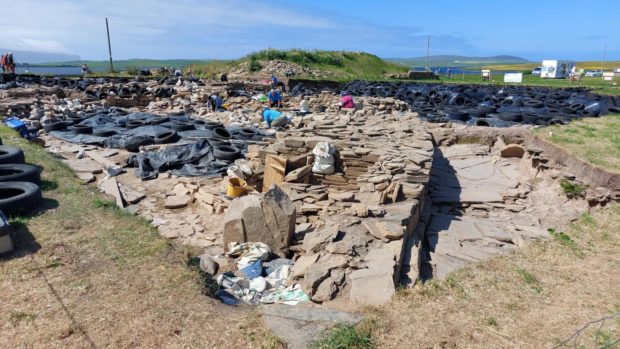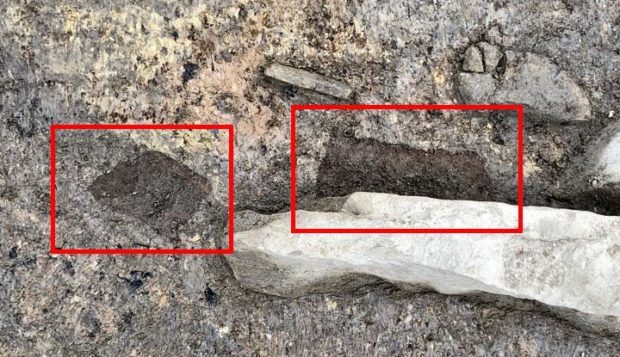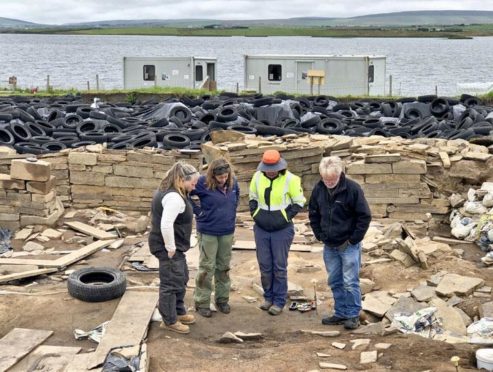Archaeologists working on one of Scotland’s most important and fruitful excavation sites have made a discovery that has surprised even them: two pieces of Neolithic wood.
The find was made at Orkney’s Ness of Brodgar, a dig located close to the more famous Ring of Brodgar stone circle, at the end of last month.
It is the first example of wood from the time the Ness structures were built, around 5,000 years ago, to be found on the 17-year-old site.
While the mainland is well-known for its lack of woodland, the Ness of Brodgar – situated on the narrow strip of land between Loch of Harray and Loch of Stenness – dates back to a time when trees were relatively plentiful.
The main phase of the Ness, which is the part currently being explored, was constructed around 3,100BC, making it about as old as the oldest sections of Skara Brae.
From that point on, the site was built up into a complex of large, grand freestanding buildings surrounded by an enormous stone wall – not a domestic settlement, but particularly special for reasons that can only be speculated upon.
Treasure trove
Among the other artefacts found on the site are the Butterfly Stone with a geometric carving that has become the symbol of the Ness, a mysterious carved stone ball with six projections, and a shard of pottery with a 5,000-year-old fingerprint pressed into it.
The wood was found in two post-holes in the floor of Structure Twelve, near the eastern entrance which is believed by archaeologists to be particularly special due to the addition of external upright slabs known as orthostats.
Site director Nick Card, who has worked on the Ness since it was first discovered and has watched it develop into an excavation of huge importance, thinks the wood may have been driven into the ground as a replacement for different orthostats.
A post from the dig’s blog describes it as an “astonishing new discovery”, but adds: “The wood is not in good condition, which is hardly surprising after thousands of years in the ground.
“It is, however, in a slight dip in the floor which may have allowed moisture to be present, thus preserving the material.
“As it is far too mushy to be lifted there are ongoing discussions as to the next move.
“The aim is to recover it in a manner which might allow identification of the type of wood present. It might also be possible to see if the wooden stakes had been sharpened before being driven into the floor.”
Return to the site
The site, considered to be the ‘flagship’ of the University of the Highlands and Islands’ Archaeology Institute, is approaching the end of its seven-week annual excavation.
At the end of June it reopened for the first time since 2019, after the team there was forced to stay away last year due to the coronavirus pandemic.
Wednesday will be the final day visitors are able to see the Ness, which is largely covered by tarpaulin and tyres due to the limited numbers allowed to work on the site.


